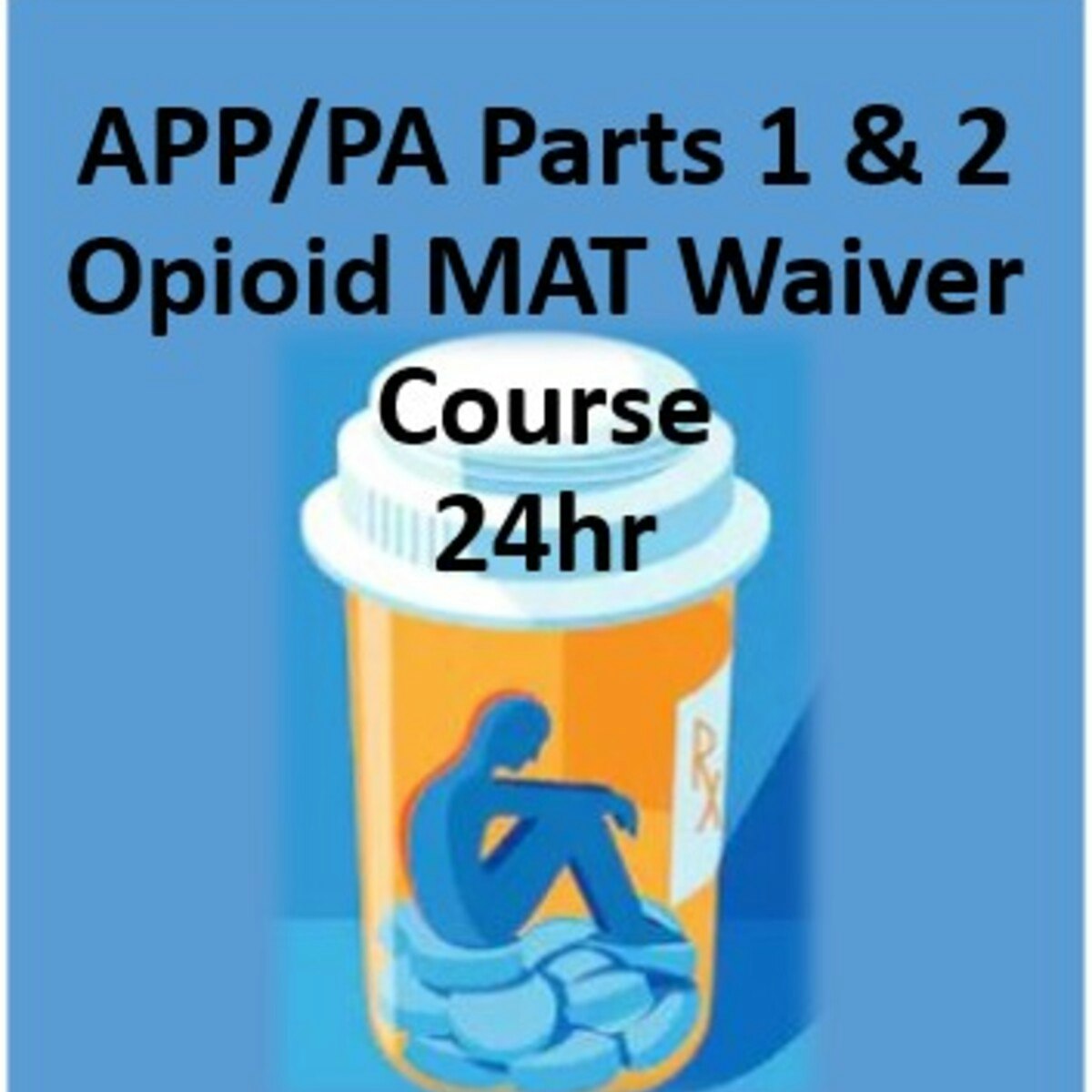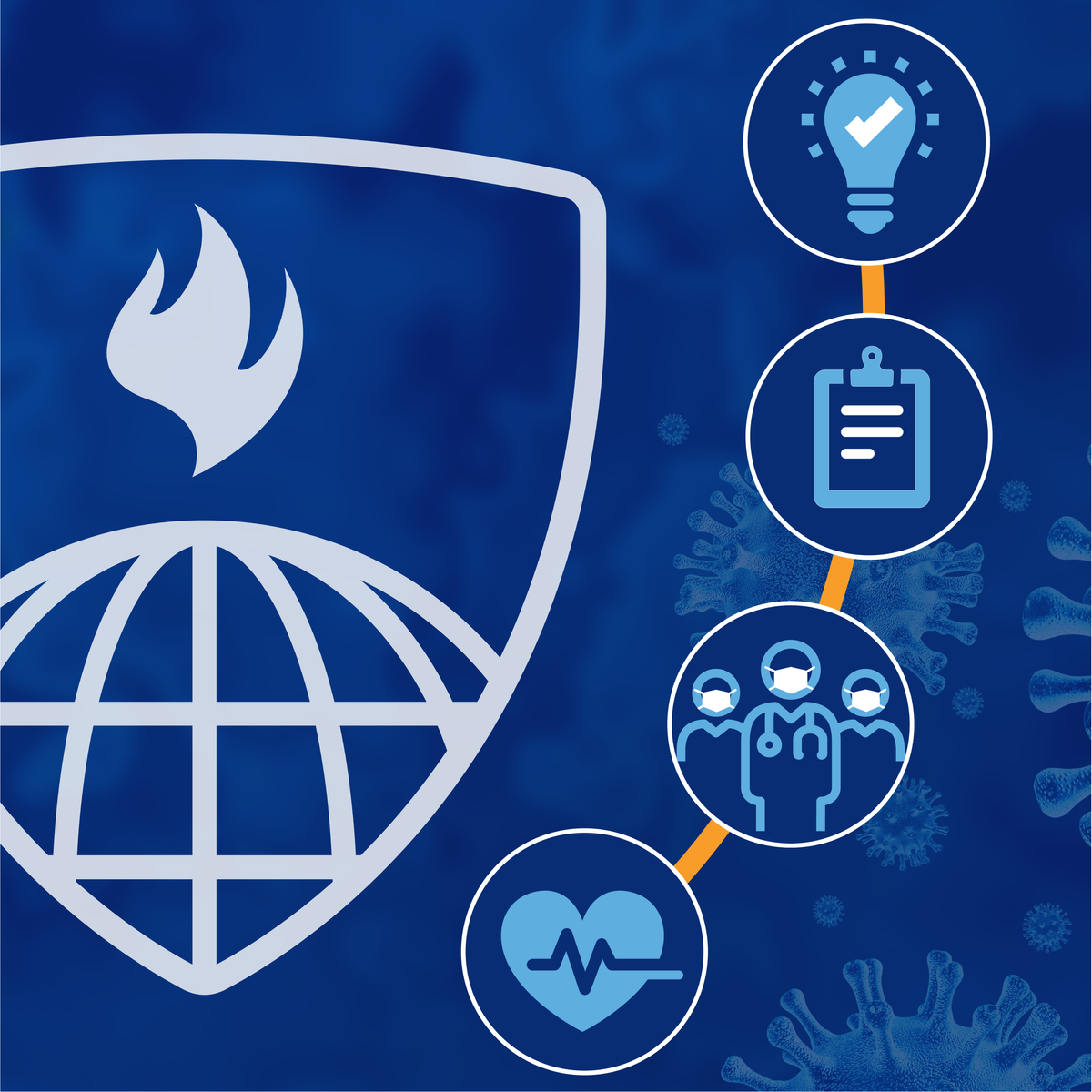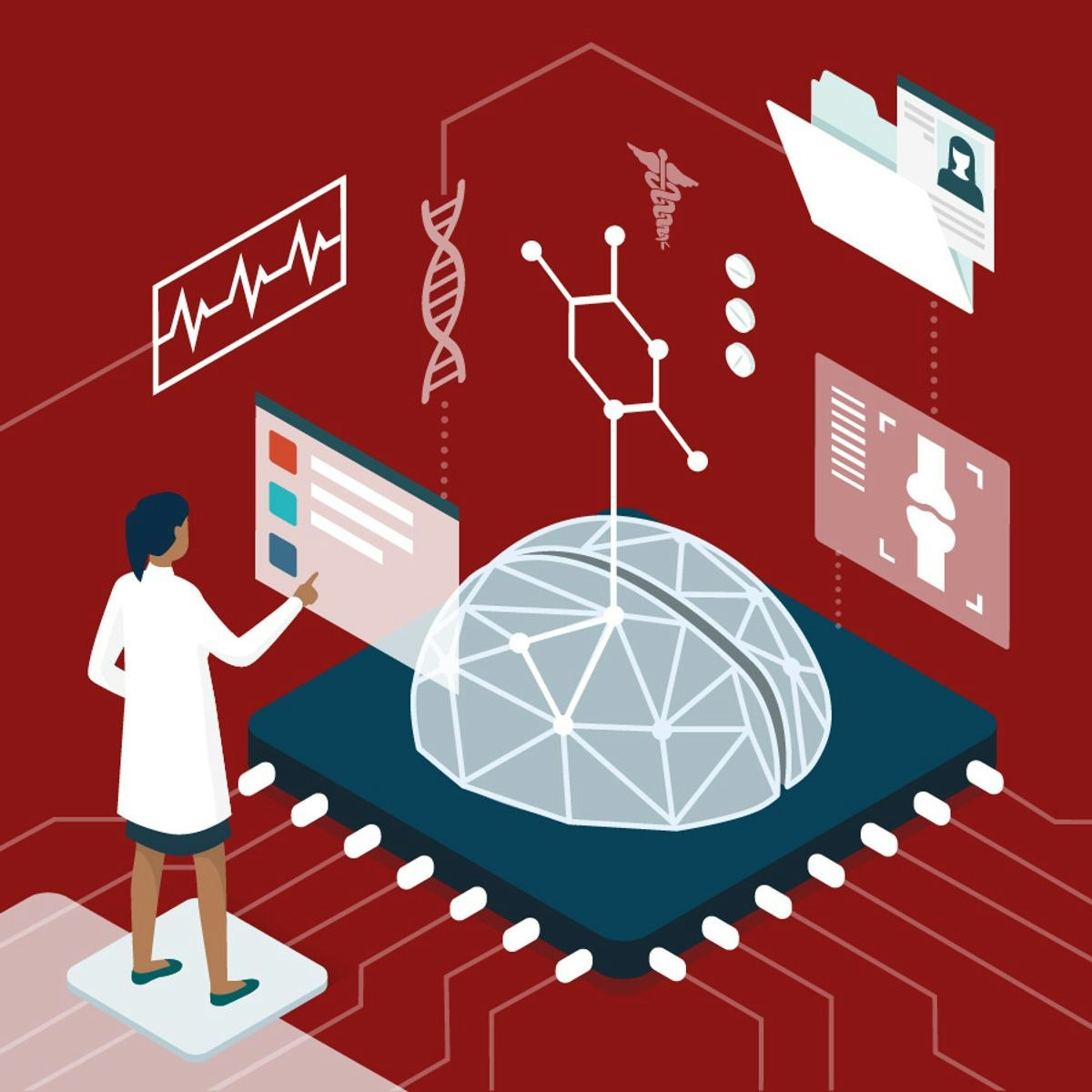Back to Courses









Life Sciences Courses - Page 34
Showing results 331-340 of 644

Understanding the Brain: The Neurobiology of Everyday Life
Learn how the nervous system produces behavior, how we use our brain every day, and how neuroscience can explain the common problems afflicting people today. We will study functional human neuroanatomy and neuronal communication, and then use this information to understand how we perceive the outside world, move our bodies voluntarily, stay alive, and play well with others.

In the footsteps of Zika… approaching the unknown
Welcome !
Welcome to this on-demand MOOC “In the footsteps of Zika… approaching the unknown”.
This MOOC has been produced by Université de Genève (www.unige.ch), Institut Pasteur (www.pasteur.fr), Université Paris Descartes (www.parisdescartes.fr) and Centre Virchow-Villermé (virchowvillerme.eu).
With the help of the intervention of faculty members and international experts, we will explore together the recent Zika phenomenon, a previously rare benign virus that recently turned unexpectedly into the limelight when on the 1st of February 2016 it was declared by the WHO as a Public Health Emergency of International Concern.
As this outbreak is still ongoing and under close investigation, this MOOC has the opportunity to be an open learning experience that will follow the marked developments and new discoveries over time. This MOOC will bring you to the heart of the Zika outbreak and invite you to this adventure in uncharted territories.
Moreover, we invite you to join the interactive dialogue among participants and facilitators through a community of practice, which promotes questions, critical thinking, participatory learning, as well as interrelated and ongoing collaborative information.
Let us learn hand in hand all together to go further in finding clues and eventually solutions!
Course description
This interdisciplinary course is divided into 8 modules available in 4 languages (subtitles in English, French, Portuguese, Spanish).
Each module is organized around a central topic that will help those who take the course to develop their skills and knowledge. Each module provides
- interviews with specialists
- quizes
- recommended readings
- online videos and web links.
This MOOC will cover a range of topics, such as epidemiology, historical and geographical dispersion of the virus and its vectors through globalization and climate change, its modes of transmission, but also the symptoms, diagnosis and treatment. The different types of preventive measures will be also covered.
A special module will focus on possible neurological adverse effects such as the risk for birth defects (microcephaly) in pregnant women, while another one will examine the peripheral nerve paralysis called the Guillain-Barré syndrome.
The fact that Zika presents a significant threat to political and economic stabilities and thus reinforces social inequity through South America will be addressed.
The revolution in cultural, religious, and legal norms in front of the expansion of Zika will be also debated.
Finally, the last two modules will state the role, recommendations and response measures of policy makers and public health organizations under the light of medias.

Overcoming Dyslexia
Dyslexia is everywhere, touching so many children and adults, and while science has made extraordinary progress in understanding and clarifying the condition, this incredible powerful knowledge rarely reaches those who most need to know and would greatly benefit from it. Our goal is to change all this with the Coursera you are about to view, produced by Dr. Sally Shaywitz, the Audrey G. Ratner Professor in Learning Development, both the leading scientist studying dyslexia and the most devoted advocate for helping those who are dyslexic.
The course addresses and answers just about all the questions you have: beginning with what is reading and what is dyslexia and sharing with you the most up-to-date 21st century federal definition of dyslexia. If you are dyslexic, you’ll come to learn you are not alone – dyslexia is very common affecting one out of five, that is, 20% of the population, including both boys and girls all over the world. The course addresses a major question we hear from so many parents and teachers– how do I know if my child may be dyslexic? What signs or symptoms should I be on the lookout for? And here’s another very important question we hear from so many parents and educators who are eager to do the best for their child – when should screening for dyslexia begin? What is the best method? What should I look for or ask about?
A major source of worry for parents is their child’s slow reading- they ask will this prevent a happy future for the child. Yes, dyslexics are slow readers and here, in Coursera, you will come to understand the brain’s role in dyslexia, including slow reading. Great news to share – you will also be so delighted to learn that surrounding a dyslexic’s slow reading is a phenomenal powerful sea of strengths in big picture thinking and reasoning. Dyslexia is a true paradox: dyslexics may be slow readers but at the same time are incredibly fast thinkers!
You can be assured, if you care about a child or someone who is dyslexic and have questions or concerns, you will find it addressed here in this course: everything important to know about and help you select the most effective interventions for a dyslexic child; how to go about choosing the best school, including potentially one that is specialized, for such a child, including what is most important to look for when visiting a potential school; the role of accommodations and how to select the best one; and common co-occurring conditions like ADHD and anxiety – their impact, how to recognize and treat. In the following lessons you will meet wonderful, incredibly insightful and highly successful dyslexics – including governors, cardiac surgeons, nationally renowned attorneys, basketball coaches, economists and dyslexic children and their wonderful families who will share their experiences and advice. Enjoy!

Advanced Practice Provider/Physician Assistant: Opioid Use Disorder Medication Assisted Treatment Waiver Training (24hr)
This online course opportunity is made possible through a joint partnership with University of Virginia School of Medicine (UVASOM) and Nursing (SON) and the American Academy of Addiction Psychiatry (AAAP), Data 2000 sponsor for this MAT waiver training. This content was created by the AAAP and has been used with permission. This course is designed to highlight important issues affecting prescribing clinicians regarding the new requirements and guidelines in opioid prescribing and management for acute and chronic pain management. This course is divided into two parts; part 1 consists of 8 individual sessions of the required 24 hours of content; part 2 consists of the remaining 16 hours of content for advanced practice providers and physician assistants who wish to apply for a waiver to prescribe buprenorphine for the treatment of opioid use disorders. There are 3 case modules in part 1. Both part 1 & 2 contain graded post-module questions, the total of which must be completed with 80% accuracy. A certification of completion will be issued for successful completion of the entire training. Successful completion of both parts 1 and part 2 will satisfy the 24 hour requirement for MAT waiver training for advanced practice providers and physician assistants to prescribe buprenorphine for the treatment of opioid use disorders.
Estimated time to complete this activity: 9.5 hours
Release date: March 1, 2020
UVA Grant Dates: 09/30/2019 – 09/29/2022
Funding for this initiative was made possible by a grant from SAMHSA. The views expressed in written conference materials or publications and by speakers and moderators do not necessarily reflect the official policies of the Department of Health and Human Services; nor does mention of trade names, commercial practices, or organizations imply endorsement by the U.S. Government.

Value-Based Care: Quality Improvement in Organizations
COURSE 6 of 7. Fragmented healthcare has created the need for healthcare reform, changing how healthcare is delivered and managed by shifting the structure and culture of healthcare organizations across the U.S. In this course, you will explore ways that provider organizations can successfully move from volume to value through implementing Quality Improvement plans and Continuous Quality Improvement. Organizational improvement is a continuous process. To be successful means coming to grips with things you have to do, how they get done, and who needs to be involved. Paramount to the process is recognizing that every role—every team member—in the organization is important to a successful VBC strategy. You will also learn about adaptive leadership and how to advance vision and innovation through collaboration. Collaborative relationships between team members and leadership are critical to the transformation. You will explore strategies to gain buy-in, agreement, and understanding about the organization’s vision of value-based care and learn to engage team members in developing solutions to challenges. In the summative assignment, you will identify a measurable value-based care goal that would benefit from process improvement, describe how that goal will be communicated with the care team, and explain your role in leading the targeted improvements.

Strategies for Assisted Living Communities during COVID-19
SARS-CoV-2, the virus that causes COVID-19, poses a high risk for assisted living communities due to residents’ age, health status, and communal living environment. The COVID-19 response has largely focused on nursing homes, leaving assisted living communities in the United States with fragmented guidance on how to respond to COVID-19 challenges. This course provides comprehensive instruction and resources for administrators and direct-care staff of assisted living communities.
Learners will hear from experts about best practices to prevent COVID-19 outbreaks and promote well-being. Topics discussed include development of emergency preparedness plans, infection and outbreak prevention, staffing considerations, testing, and contact tracing. The course also covers strategies for communicating with stakeholders, promoting resident and staff well-being, and leveraging health departments and other agency resources, including a collection of resources for COVID-19 vaccination guidance. Learners are encouraged to concurrently develop and enhance their own community’s policies, procedures, and practices.
This course was developed in partnership with the Baltimore City Health Department.

Healthcare Marketplace
In this course in the Healthcare Marketplace specialization you will identify, define, and describe potential business and public policy solutions to the challenges facing society’s growing demand for health services. Students will master a body of knowledge on the health care sectors major components through reading and reflection.
Healthcare has many different cultural components that will be discussed as historic trends as well as future demographic challenges. You will understand diverse philosophies and cultures within and across societies as they relate to healthcare. This outcome is particularly critical because of the tradeoffs needed to be assessed as medical technology advances faster than budgets and perhaps cultures are sometimes willing to tolerate.
At the end of the day, you will gain an appreciation for the role of creativity, innovation, discovery, and expression across disciplines in the development of new medical care solutions through and examination of the physician, medical technology and financing sub-sectors of the health economy.

Preparing to Manage Human Resources
One way or another, all employees are managed. But approaches to managing employees varying from employee-to-employee, job-to-job, manager-to-manager, organization-to-organization, and country-to-country. This course provides a foundation for developing your own approach to skillfully managing employees by illustrating alternative human resource management (HRM) strategies, introducing the importance of the legal context, and thinking about what motivates employees. This will then give you the factual and conceptual basis for developing specific, critical HRM skills in subsequent courses on hiring employees, managing performance, and rewarding employees. Don't know anything about HRM? That's OK! Leave this course with a new-found understanding of the range of options available for managing employees, a grasp of what makes workers tick, and the readiness to develop your own HRM skills.

AI in Healthcare Capstone
This capstone project takes you on a guided tour exploring all the concepts we have covered in the different classes up till now. We have organized this experience around the journey of a patient who develops some respiratory symptoms and given the concerns around COVID19 seeks care with a primary care provider. We will follow the patient's journey from the lens of the data that are created at each encounter, which will bring us to a unique de-identified dataset created specially for this specialization. The data set spans EHR as well as image data and using this dataset, we will build models that enable risk-stratification decisions for our patient. We will review how the different choices you make -- such as those around feature construction, the data types to use, how the model evaluation is set up and how you handle the patient timeline -- affect the care that would be recommended by the model. During this exploration, we will also discuss the regulatory as well as ethical issues that come up as we attempt to use AI to help us make better care decisions for our patient. This course will be a hands-on experience in the day of a medical data miner.
The Stanford University School of Medicine is accredited by the Accreditation Council for Continuing Medical Education (ACCME) to provide continuing medical education for physicians. Visit the FAQs below for important information regarding 1) Date of original release and Termination or expiration date; 2) Accreditation and Credit Designation statements; 3) Disclosure of financial relationships for every person in control of activity content.

Introduction to Biology: Biodiversity
In this course we will examine the incredible variety of life that inhabits this planet including microorganisms, plants, and animals. For each of the major groups we’ll learn about their characteristics, functions, and how they came into existence as well as some of the roles they play in the natural world, and how they’re relevant to people. We’ll also take a close look at us humans and consider what we know about our origins and what might become of us in the future.
Popular Internships and Jobs by Categories
Find Jobs & Internships
Browse
© 2024 BoostGrad | All rights reserved